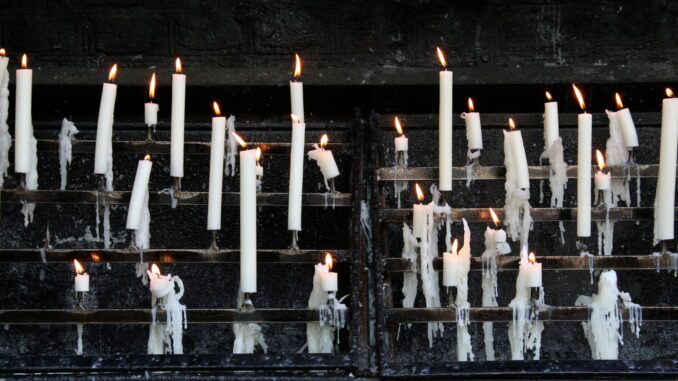
I’ve always felt bad for witches. They are commonly depicted as women who are too old, too ugly, and too evil. Too different. Authors and storytellers alike emphasize the witches’ lack of beauty, mentioning any and all physical features that don’t fit into society’s beauty standards. They have big noses, wrinkled skin, cracked lips, big warts, stringy hair, and bony knuckles. Sometimes, if there is a need to make the witch even more undesirable, she is given green skin or animal characteristics.
The witch is typically depicted as a solitary character. She lives alone in a small cabin; a black cat is sometimes the only exception to her isolation. She usually pours herbs, bones, and insects into a cauldron and creates a bubbling green potion. This potion could kill the lonely traveler who is lost in the woods or bewitch the innocent children who are looking for adventure. But do we really know its purpose, or are we only guessing? I wonder if anyone has ever asked her what she’s making, or if we all choose to believe the trustworthy author or the honest storyteller.
That depiction of a witch is what most of us know. However, the idea of a “witch” is something that translates across cultures. I remember my mom once told me the story of the Mometzcopinqui, a story which originates from the Nahuas in central Mexico. Like many fairy tales, folktales, myths, and legends, this story has many versions, but this is the one I was told:
There once lived a man and woman whose newborns always died in the middle of the night. One day, the man asked a village elder about the cause of the sudden deaths. The elder replied that the reason was a mometzcopinqui. The man doubted it, but decided to stay awake one night after the birth of another newborn. The elder was right. His wife woke up in the middle of the night and took off her legs, slowly growing feathers and a beak. After the transformation had finished, before him stood a turkey that got close to their baby and began to suck its blood.
Since this story comes from a different time and culture, they didn’t use the word “witch”, instead using mometzcopinqui. However, when listening to present day retellings, it’s common to hear the word “witch”. What makes the mometzcopinqui a witch? Well, she’s a woman, she can turn into a turkey through supernatural means, and she drinks the blood of babies. In summary: an evil, magic woman.
Most kids wrote about how their witch robbed, fought, or killed them.
My witch did none of that. My witch helped me.
There isn’t much that makes me feel bad about the mometzcopinqui, she was drinking the blood of babies after all. But what I do sympathize with is the principle. The fact that women are often villainized through the characters of “witches” creates an uneasy feeling. The problem is that witches are not always reserved to the role of a character. Sometimes people believe them and their evil to be real, and that leads to disaster. Most people have heard of the Salem witch trials and the innocent people that were killed. Though it is true that both men and women were the victims of these unjust trials, it’s also true that women were accused to be witches disproportionately. But Salem wasn’t the first time the word “witches” villainized women resulting in scrutiny or their deaths.
Through the ages there has been the ongoing pattern of women being blamed for misfortunes and labeled witches, both in stories and in history. If the protagonist needed to be tempted to commit a horrendous act of evil, a witch or three could be very useful (Shakespeare’s Macbeth). If there was a scary storm that affected a king, a witch was easily found and punished by being burned at the stake (King James in the late 1500s). Most history pertaining to witches is more depressing than it is scary.
I have always felt bad for witches. In third grade we were assigned a prompt, asking what would happen if we met a witch. Most kids wrote about how their witch robbed, fought, or killed them. My witch did none of that. My witch helped me.
How could I depict them in such a foul way when I felt like I had been saved by one? My family has a belief that, though Western medicine is very useful, traditional medicine should be treasured, used, and preserved. As people with a plethora of health issues and generational trauma, we often went to Rocio. She was an older woman with wrinkles and bony knuckles. She seemed happy in solitude and her shop smelled of a thousand herbs, oils, and incense. Her walls and ceiling were covered with indecipherable symbols and strange decorations. She used to hum, place magnets on us, light candles, and prescribe cranberry juice. I was also skeptical, but every time we left her care, it felt like entering a new world with fresh possibilities. Aches were gone, minds were cleared, and the heart felt a little lighter. To me, Rocio was a witch. Using leaves and natural scents, it felt like she had magic in her hands.
Rocio is what I believe most historical witches were like. They were women who knew how to connect with their “patient”. They were women who knew how to combine herbs and oils to create relief which bordered on magic. They were women who knew how to form a mystical aura around themselves. They were women who knew how to do unexplainable things, but sadly many people feared the unknown.
I have always felt bad for witches. For too long, witches have been stripped of their beauty, their knowledge, and their kindness. They’ve been stamped with the image of evil and have been persecuted and killed because of it. I feel bad for the women who have been called witches. They were those who dared to be different; they were those who suffered the consequences.
